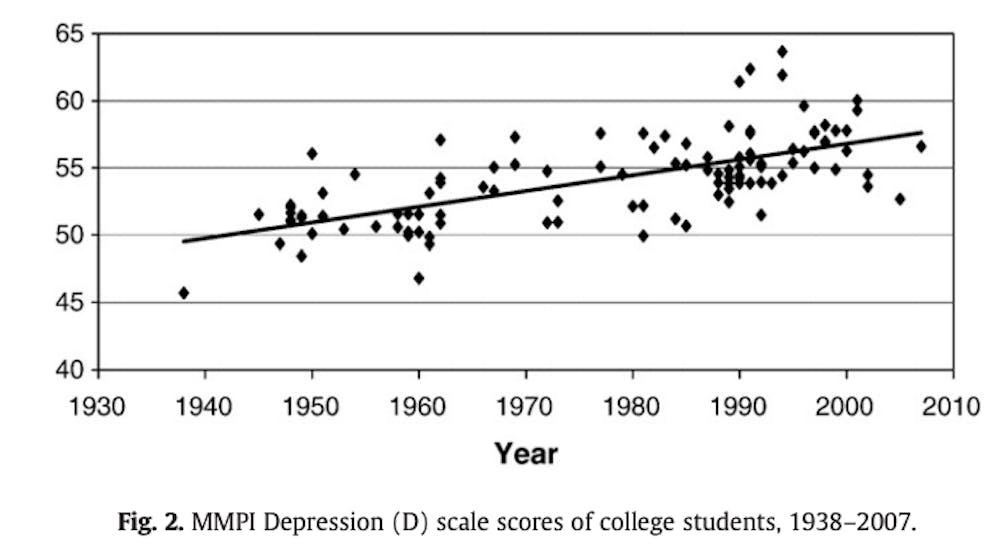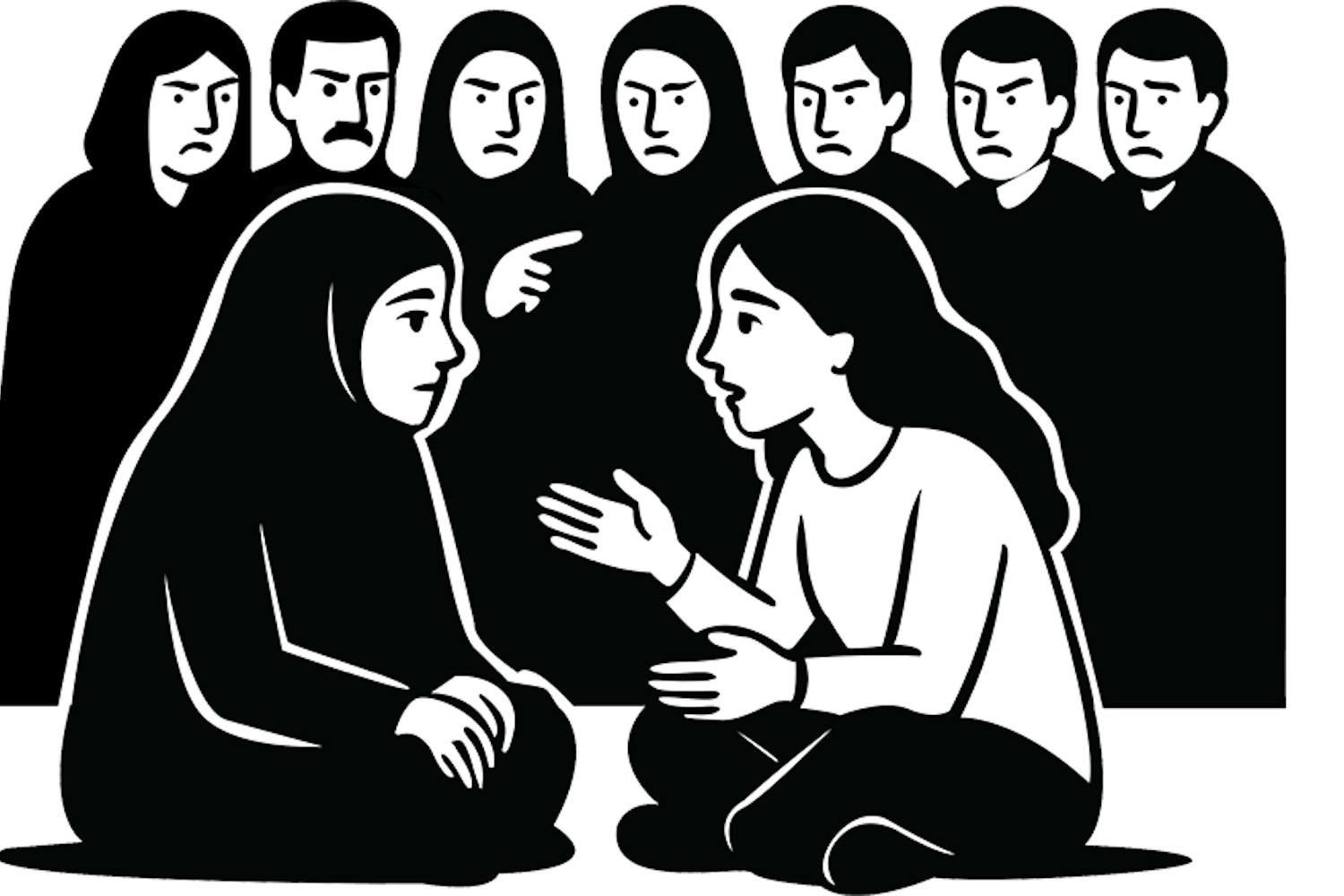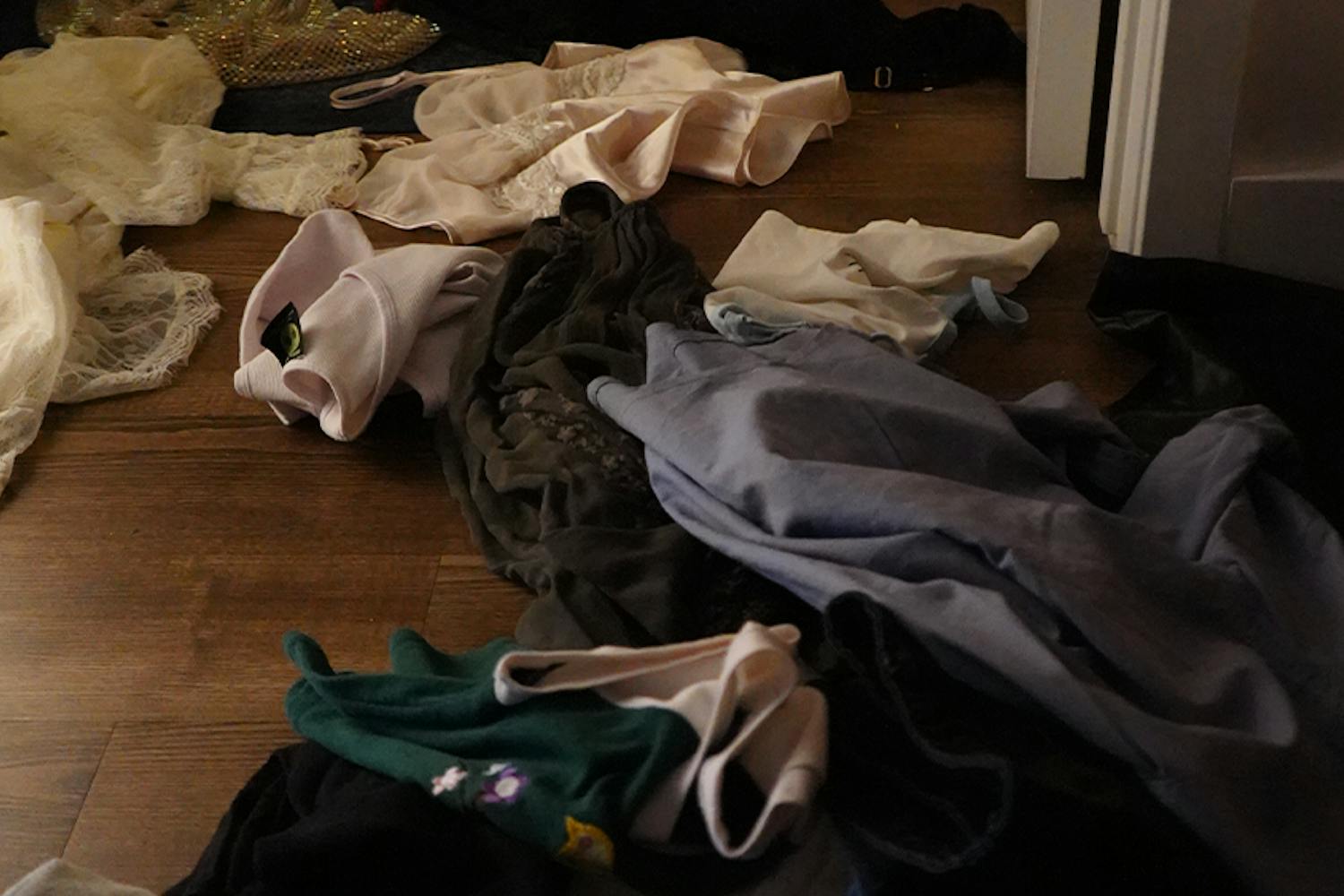“happy thanksgiving. i'm thankful for my eventual death,” parody Twitter account @Lonely_Dad tweeted this past November to an applauding 3.9 thousand retweets.
Actually, it was a retweet of what the user had posted the Thanksgiving three years prior, in 2015.
Maybe something like this made you laugh the first time you saw it — a comically depressive account that fudges the line between the ironic and the sincere. Tweets like this, which are demonstrably more difficult to interpret out of context, are a form of communication online that both maligns and validates one’s feelings of depression, anxiety and faults.
Fatalistic memes (synonymously, "depression memes") are a humorous form of media relating that all events are predetermined and, therefore, inevitable. Someone may be hopelessly single, hopelessly friendless, hopelessly a failure or just plain hopeless. Memes have grown to become an outlet for depressive catharsis, reigning over entire portions of Twitter, threads on Reddit, pages on Tumblr and one-liners in cinema.
From Mods and Hippies to Goths and Hipsters, there have always been youthful subcultures that rebel against those who they perceive control their worlds. However, the internet’s revolution of communication presents an entirely new form of expression where fatalistic memes have found a comfy, lasting niche.
The people who become entrenched in the validation of their anxieties and feelings of inadequacy become subject to an echo chamber that only grows in volume as one fudges the line between the dank and the dark.
Digital culture sophomore and ASU comedian Jacob “Big Chip” Valencia, a nickname he earned from his family but that has come to be his moniker in daily life, said the rise of so-called depression memes may be attributed to the movement away from presenting oneself as a “beautiful pearl” and moving toward a more lurid appreciation of one’s “flaws and quirks.”
“Especially with social media now, being the victim and being the underdog is almost good,” Big Chip said. “People want to be the one with problems — and people do have their issues, obviously — but I guess it’s a trend.”
The Community
So, let's start with the heavy stuff: the internet and depression. More than ever, people have the ability to express themselves on the internet.
Fatalistic meme communities are not organizing groups of like-minded people. Instead, they are searching for a community to express their feelings, whatever those may be, Associate Vice President of ASU Health and Counseling Services Aaron Krasnow said.
“People want validation,” Krasnow said. “They want their feelings to make sense, and they want community. And so, any circumstance in which whatever they’re feeling inside, articulated or not, can be reflected in something that feels real, or feels like another person, that’s a human need.”
On the Reddit page /2meirl4meirl, there is a plethora of jokes about the inability to be happy, battling inner demons and the inability to emotionally connect in dating and relationships.
“You feel less isolated, and you recognize that this thing people have been saying that I see online, it’s normal to feel this way, and here’s some evidence to show that’s true, I’m not the only one,” Krasnow said.
The two most common mental health concerns at colleges around the country are depression and anxiety, and these symptoms are on a charted increase among youth, according to the Minnesota Multiphasic Personality Inventory, an annual test administered to Americans about personality traits including depression and anxiety.
No formula exists for what causes anxiety and depression, Krasnow said. Issues may be long-standing or brand-new, and every case is unique to the individual undergoing these feelings.
ASU is one of the best colleges in the country in staving away anxiety and depression, Krasnow said, but the empirical data is overwhelming that both of these problems are growing steadily among the youth.
The Nuffield Foundation, a charitable trust that funds research in welfare, education and justice, published a study in a book in 2012 comparing adolescents to previous decades. The study found that 15- to 16-year-olds in 2012 reported anxiety and depression twice as often as adolescents in the 1970s and 1980s. One in 15 boys will have anxiety or depression and one in five girls will as well.
Valencia sees more of the same on Twitter where he’s had an account since 2015. Some of the communities Valencia has seen place mental health first, and some communities attempt to dissuade members from seeking mental health services and continue making depressing content for the community. All in the name of being a "content creator."
“There’s even memes about not seeking help, and just going on Twitter, which I think that’s the seed. That’s where it’s going to start being a problem for mental health. There is going to be a conversation for it, but it’s not going to be taken seriously,” Valencia said.
The Catharsis
Fatalistic memes and the communities they thrive in may all be a part of a coping mechanism to deal with the symptoms that are too hard to deal with head-on. Krasnow compared depression memes to an older form of comedy, gallows humor.
Gallows humor, also called black comedy, was first recorded by Merriam-Webster in 1902 with German origin. In the 10-15 second walk-up to the scaffolding where offenders would breathe their last breath, some on death row would make ironic jokes about their dismal situation.
For instance, John Amery, a fascist traitor against the British during World War II, was sentenced to die in this way by a prolific executioner in British history, Albert Pierrepoint. Before a white hood was placed over his face, Amery turned to Pierrepoint and said, “I’ve always wanted to meet you, Mr. Pierrepoint. But not, of course, under these circumstances.”
The long age of black humor points to the fact that the spirit captured by depression memes is by no means unique to the internet generation.
Mark Tebeau, a history professor within ASU's School of Historical, Philosophical and Religious Studies, said that this content is completely ordinary for those going through adolescence and young adulthood — the perfect pearl narrative of growing up young and happy has long been a facade.
The mid-20th-century artist Norman Rockwell portrayed the ideal American childhood to millions of middle-class people. His catalog includes glamorized images of public figures like John Wayne, school children playing on jungle gyms and family football games in the park.
“Rockwell is a kind of mythic version … but it’s all a myth, right? In fact, there’s alternative youth subculture that had already emerged in the 50s and 60s, which were taking directions quite differently from that," Tebeau said.
Tebeau said the negative effects of having more access to information and technology are just scapegoats used by society to explain a perpetually troubled youthful generation. He said that it is a meme itself in American history that “technology is transforming society to the negative."
“There’s a lot of cultural angst about how the internet is changing youth culture … but it strikes me that our culture offered the same critiques of youth culture as it pertained to television in the 1970s and 80s,” Tebeau said.
Krasnow said he believes this type of humor can be therapeutic as long as it doesn’t create more problems for that person or become an unhealthy coping mechanism. Instead of taking the brunt of anxiety and depression head on, humor deflects the pain onto something more manageable.
For Big Chip's part, he said that when he was younger students in his classes would pick on him for being small. In order to stop the bullies, his father told him to make self-deprecating jokes to take away his bullies’ power to mock him.
“Humor is a way of dealing with tragedy, political unrest, and most certainly a way of dealing with personal trauma,” Krasnow said.
When Valencia is going through a rough time, he sees how that affects his comedy on Twitter and in person.
“The more of a rough time I’m going through, personally, the funnier my Twitter will be. Absolutely. And I’ve looked back at times in my life. The worse state I’m in, the funnier I am,” Valencia said.
The Science
Many reports about the generational approaches to depression and anxiety would support Tebeau regarding the idea that each new generation of teenagers face youth crises and that technology has been to blame for these crises – until you get to 2010.
In the book, "iGen: Why Today’s Super Connected Youth are Growing Up Less Rebellious, More Tolerant, Less Happy – And Completely Unprepared for Adulthood," Jean M. Twenge argues that iGen, those born between 1995 and 2012, are “distinct from every previous generation.”
The difficulty, Twenge writes, is distinguishing what are common feelings during adolescence and what are new patterns due to generational shifts in mood.
“They are obsessed with safety and fearful of their economic futures...” Twenge writes. “They are at the forefront of the worst mental health crisis in decades, with rates of teen depression and suicide skyrocketing since 2011.”
The studies Twenge cites also indicate iGens are maturing slower, yet remaining beholden to high aspirations of success.
“I agree with that completely,” said Hayley Seely, a graduate research assistant at ASU studying social and behavioral sciences, regarding Twenge's findings.
Working with middle school adolescents, Seely has found in her research that the students feel immense pressure, she said.
“One of the things that I always see shine through is that their lives are hard, even if their lives are stereotypically easy,” Seely said. “Some people say that melancholia has existed forever, which is very true ... but it seems that there’s kind of a unique situation going on right now. Especially – and I’m speculating here – as a society, we’re pushing for more and more success at younger and younger ages.”
The pressure to surpass one’s peers' success is not creating new angst, it’s exacerbating the angst that is already there, Seely said.
The rise in fatalistic memes is proving to be a response, a coping mechanism, to deal with this growing melancholia, and online communities have become a safe space for expressing iGens’ feelings of inadequacy.
Valencia said that when he first found what comedy was, it was about noticing the things that were out of place. If something was “wrong,” that would be funny. But, sometimes it's the people themselves who feel out of place.
Today, users online are poking fun about how they feel in life through memes that speak to self-inadequacy, an inability to stack up.
“Once you accept that you have a problem,” Valencia said. “The coping mechanism of comedy becomes even healthier because you know it’s a coping mechanism and not a mask.”
Reach the reporter at chasehunter1298@gmail.com and follow @ChaseHBudnies on Twitter.
Like State Press Magazine on Facebook and follow @statepressmag on Twitter.





